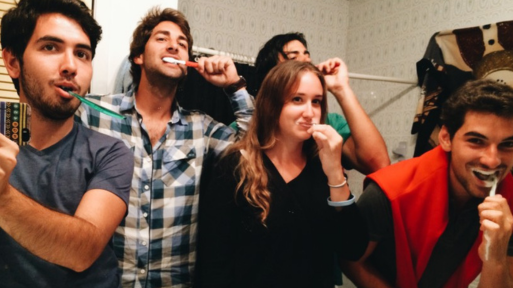 Brushing your teeth seems straightforward, but doing it correctly is key to maintaining optimal dental health. Effective brushing not only cleans your teeth and gums but also helps prevent a multitude of dental problems. Let’s brush up on the best techniques to keep your smile healthy and sparkling.
Brushing your teeth seems straightforward, but doing it correctly is key to maintaining optimal dental health. Effective brushing not only cleans your teeth and gums but also helps prevent a multitude of dental problems. Let’s brush up on the best techniques to keep your smile healthy and sparkling.
- Select the Right Tools: Choose a soft-bristled toothbrush that fits comfortably in your mouth and reaches all areas easily. For toothpaste, opt for one that contains fluoride and carries the American Dental Association (ADA) seal of approval. Consider an electric toothbrush if you want a more thorough clean with less effort.
- Timing is Everything: The ADA recommends brushing for two minutes, twice a day. Timing is critical; too short and you won’t clean effectively, too long and you might damage your gums or enamel.
- The 45-Degree Angle Approach: Place your toothbrush at a 45-degree angle to the gums. This position allows the bristles to reach beneath the gumline, where plaque can accumulate and cause gum disease.
- Go Gentle: Use gentle, short, tooth-wide strokes. Aggressive brushing can wear down enamel and irritate the gums. Think massage, not scrub.
- Brush in a Pattern: Don’t brush randomly. Start by brushing the outer surfaces of your teeth, then move to the inner surfaces, and finish with the chewing surfaces. For the inner front teeth, tilt the brush vertically and use several up-and-down strokes.
- Don’t Forget the Tongue: Bacteria on your tongue can lead to bad breath and contribute to tooth decay. Gently brush your tongue from back to front to remove these germs.
- Flossing is Integral: Floss at least once a day. It removes food particles and plaque that a toothbrush can't reach, which is crucial for preventing gum disease and tooth decay.
- Rinse and Repeat: After brushing and flossing, rinse your mouth with water or an ADA-approved mouthwash to remove any loosened plaque and food particles.
- Regular Replacement: Replace your toothbrush every three to four months or sooner if the bristles are frayed. A worn toothbrush won’t do a good job of cleaning your teeth.
- Technique Over Tools: While it’s important to have a good toothbrush, technique matters more. Even the most high-tech brush won’t help if you're using it incorrectly.
Schedule a Visit to the Dentist
Good brushing techniques are a cornerstone of oral health. It's about more than just moving a brush around your mouth; it's about making sure each tooth gets the attention it needs to stay free from plaque and prevent decay. Reinforce these habits with regular dental check-ups and professional cleanings. Prioritize your oral health by scheduling an appointment today.

